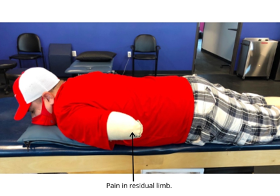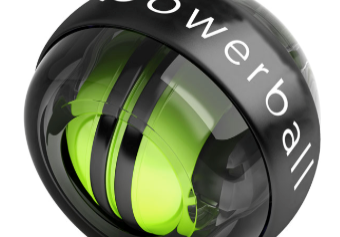By: Taylor Volentine
The wrist is composed of very complex joints that assists with movement in individuals of all ages and abilities. For instance, an active individual who participates in sports such as tennis, football, or gymnastics may increase the probability for wrist complications and injury (Morrison, 2019). Individuals with repetitive trauma from work or leisure activities may also acquire wrist pain. A TFCC tear may also occur unintentionally from an outstretched fall onto the wrist. If you have a client who has experienced one of these examples and continues to experience pain within the wrist region, the TFCC might be the problem! The goal of this post is to improve your understanding of the TFCC and what are some effective treatments options.
What does TFCC stand for?
TFCC stands for triangular fibrocartilage complex. It contains a dense cartilage on the ulnar side of the wrist and binds the radius to the ulna (Morrison, 2019). So, what is the purpose of the TFCC? The function of the TFCC is to provide a sense of stability to the distal radial ulnar joint (DRUJ) during forearm supination and pronation, wrist mobility, and functional grasp (TFCC Rehab Solutions, 2018).
Rehab Solutions. What is the TFCC? How do you treat it? Retrieved from https://rehabupracticesolutions.com/tfcc-treatment/
There are 5 components that create the TFCC:
· Articular disc
· Radioulnar ligament (Superficial and deep)
· Meniscus homologue
· Ulnar collateral ligament
· Tendon sheath of the extensor carpi ulnaris
Abbasi, D., & Vitale, M. (2019). TFCC Injury. Retrieved from https://www.orthobullets.com/hand/6047/tfcc-injury
Types of TFCC Tears
There are two types of TFCC tears. Type 1 is caused by excessive wrist movements. Examples of this include gymnasts who continually land on extended wrists, construction workers using high velocity tools like a drill or jackhammer, or an individual falling on an outstretched hand (Atzei & Luchetti, 2011). Type 2 TFCC injury is considered degenerative and chronic where the cartilage wears down over time. TFCC injuries may be seen in inflammatory disorders such as gout and rheumatoid arthritis as well (Morrison, 2019).
Tears can be located in the ulnar or central portion of the ligament. Depending on the severity of the tear they are typically done either athroscopically or open. The rehab varies based on the type of repair and the amount of initial damage.
Symptoms and clinical presentation of TFCC injury
If you have a client who presents with a TFCC injury, one may experience one or more of the following symptoms:
· Popping and clicking during supination and pronation
· Limited range of motion in supination and pronation. If TFCC injury is severe, a client may present with limited wrist flexion and extension
· Ulnar sided wrist pain
· Decreased grip strength
· DRUJ instability
· Wrist swelling (Pfanner et al., 2018).
How to tell if ulnar sides wrist pain is caused by TFCC injury
Simple palpation to the ulnar side of the wrist should be done to assess if there is tenderness within the TFCC region. To further assess TFCC injury, one may complete these three proactive tests: Care should be taken when provocative tests are performed as they can cause further injury if not done appropriately.
The ulnar impingement sign:
The client is directed to place elbow in flexed position on flat surface with wrist in ulnar deviation, have the client supinates and pronates forearm. If a clicking and popping occurs, the test is considered positive (Rehab Solutions, 2018).
The TFCC compression test:
The client maintains the flexed elbow position on a flat surface. The therapist places one hand on the distal radius and ulna to provide stabilization, with the other hand holding the client’s hand (looking like a handshake) (Rehab Solutions, 2018). The therapist will then ulnar deviate the client’s hand and maneuver wrist back and forth from supination to pronation. If clicking or popping during rotation occurs, the compression test is considered positive (Rehab Solutions, 2018).
Hogrefe, C. (2016). Wrist-TFCC Compression Test. Retrieved from https://www.youtube.com/watch?v=8Ru0RUsEoKc
The last proactive test is called the “pressed” test. The client sits on a chair with hands grasping the edges of chair. The client is directed to weight bear on extended wrists as they push themselves up off of the chair. If pain in ulnar region occurs, the test is considered positive.
An X-ray is unable to detect soft tissue but may provide insight with fractures and abnormalities within the wrist and may correlate with a TFCC injury.
What can hand therapy do to improve TFCC injuries
If a TFCC injury is severe, it may require surgical intervention. Often times patients will do a trial of hand therapy to see if this can improve symptoms before surgery. The goal of TFCC therapy is to reduce pain and inflammation along with improving wrist mobility while maintaining stability and strength (Rehab Solutions, 2018). If the TFCC injury is recent, hand therapists may create a muenster splint to limit supination and pronation or wrist mobility while the TFCC injury heals for the first 6-8 weeks (Barlow, 2016). During the wrist immobilization stage, the client should be instructed on the importance of gentle ROM of the digits to increase blood flow and decrease edema. Typical therapy regimes may include the following.
· Tendon glides
· Soft tissue massage and mobilization with passive movement
· Modalities for inflammation management
· Wrist mobility in all planes (flexion, extension, supination, pronation, radial and ulnar deviation), pain free or limited pain
· Movement of digits and incorporation of functional grasps (Rehab Solutions, 2018)
Like with all treatments good communication with your client is essential. It is important to determine their daily occupations and current level of function in order to tailor you therapy program to be occupation centered .
References:
Atzei, A., & Luchetti, R. (2011). Foveal TFCC tear classification and TFCC treatment. Elsevier, 27(3). 263-272. doi:10.1016/j.hcl.2011.05.014
Barlow S. J. (2016). A non-surgical intervention for triangular fibrocartilage complex tears. Physiotherapy Research International, 21(4). doi:10.1002/pri.1672
Morrison, W. (2019). Triangular Firbrocartilage Complex (TFCC) Tear. Retrieved from https://www.rushortho.com/body-part/wrist/triangular-fibrocartilage-complex-tear
Pfanner, S., Diaz, L.,Ghargozloo, D., Denaro, V., & Ceruso, M. (2018). TFCC lesions in children and adolescents: Open treatment. The Journal of Hand Surgery (Asian-Pacific Volume), 23(4), 506-514. doi:10.1142/S24244835518500509
3 Comments
Leave a Comment
More To Read
Phantom Limb Pain, Residual Limb Pain, & Phantom Limb Sensation: Which is Which?
Written by Melissa Miller Introduction After amputation, the majority of individuals will experience phantom limb pain (PLP), residual limb pain (RLP), and/or phantom limb sensation (PLS). Experiencing these pains or sensations can greatly disrupt an individual’s quality of life. It is important to know what each of these are as each can impact the client…
Read MoreWrist Proprioception Ideas for Hand Therapy
Wrist Proprioception Intervention Ideas: By Ammie Ingwaldson Lack of wrist proprioception exercises can affect clients in the hand therapy setting with neurological and musculoskeletal conditions. Proprioception limitations are found in common conditions such as carpal tunnel syndrome, distal radius fracture, and CRPS (Valdes, Naughton & Algar, 2014). Proprioception is necessary during daily tasks to provide…
Read MoreINTEROSSEOUS MUSCLE TIGHTNESS TESTING
May 2012 No. 19 INTEROSSEOUS MUSCLE TIGHTNESS TESTING Judy Colditz, OT/L, CHT, FAOTA INTEROSSEOUS MUSCLE TIGHTNESS TESTING – ARE YOU DOING IT CORRECTLY? The common term “Intrinsic Tightness Testing” is a misnomer as it describes a maneuver specifically designed to test tightness of the interosseous muscles. The interosseous muscles are small, short-fibered muscles contained within…
Read MoreSign-up to Get Updates Straight to Your Inbox!
Sign up with us and we will send you regular blog posts on everything hand therapy, notices every time we upload new videos and tutorials, along with handout, protocols, and other useful information.






Thanks, very nice synopsis. Always helpful-love your blog.
Thank you for the feedback and reading our blog
Maybe should have mentioned central vs. perimeter tears; often times the recovery is varied on where the tear has occurred.